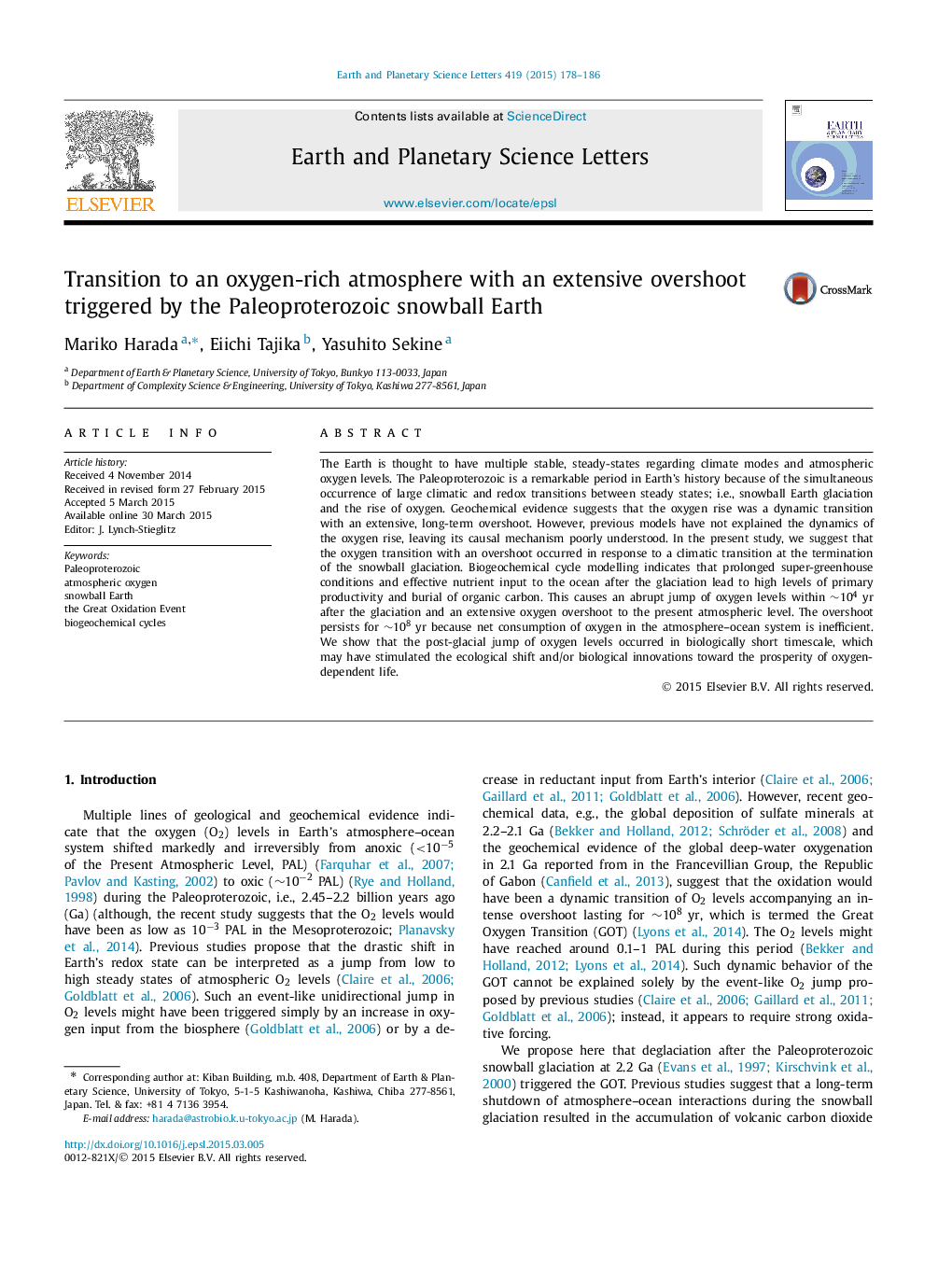| Article ID | Journal | Published Year | Pages | File Type |
|---|---|---|---|---|
| 6428502 | Earth and Planetary Science Letters | 2015 | 9 Pages |
â¢Rise of oxygen induced by the Paleoproterozoic snowball glaciation is simulated.â¢The glaciation causes a rapid transition between steady states of oxygen levels.â¢The transition is accompanied with an extensive, long-term overshoot of oxygen.â¢Such a dynamic transition is found to be consistent with geological records.
The Earth is thought to have multiple stable, steady-states regarding climate modes and atmospheric oxygen levels. The Paleoproterozoic is a remarkable period in Earth's history because of the simultaneous occurrence of large climatic and redox transitions between steady states; i.e., snowball Earth glaciation and the rise of oxygen. Geochemical evidence suggests that the oxygen rise was a dynamic transition with an extensive, long-term overshoot. However, previous models have not explained the dynamics of the oxygen rise, leaving its causal mechanism poorly understood. In the present study, we suggest that the oxygen transition with an overshoot occurred in response to a climatic transition at the termination of the snowball glaciation. Biogeochemical cycle modelling indicates that prolonged super-greenhouse conditions and effective nutrient input to the ocean after the glaciation lead to high levels of primary productivity and burial of organic carbon. This causes an abrupt jump of oxygen levels within â¼104yr after the glaciation and an extensive oxygen overshoot to the present atmospheric level. The overshoot persists for â¼108yr because net consumption of oxygen in the atmosphere-ocean system is inefficient. We show that the post-glacial jump of oxygen levels occurred in biologically short timescale, which may have stimulated the ecological shift and/or biological innovations toward the prosperity of oxygen-dependent life.
